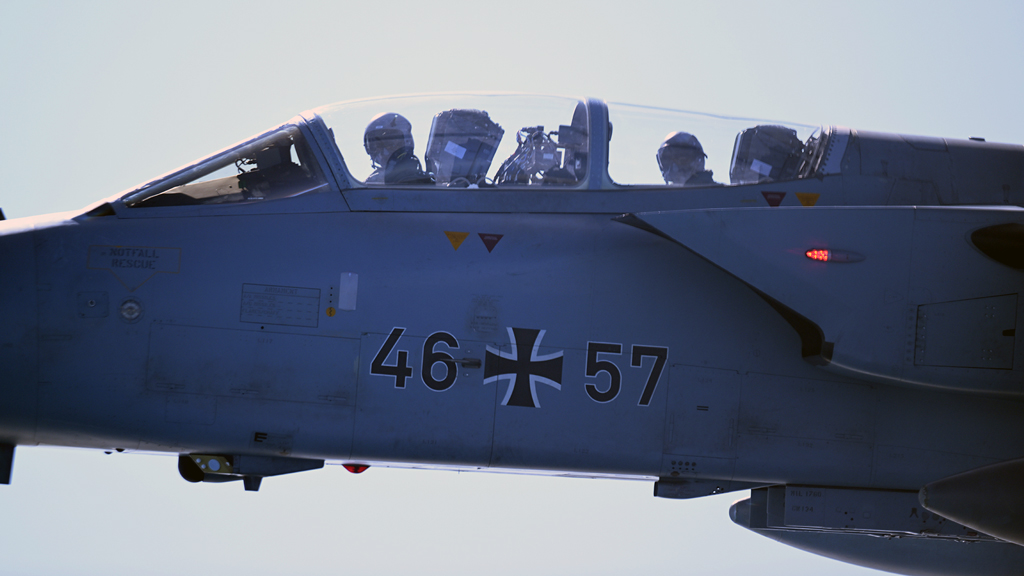US Ambassador to Türkiye Jeffrey Lane Flake announced in a social media post that Türkiye was "nearing the end" of its F-16 procurement last week. The Turkish Ministry of National Defense did not release a detailed statement on the process, but there have been reports in the media that a flexible and technical process is underway in the F-16 sales. In that case, both countries achieved a compromise and an important milestone on military sales regarding the procurement of F-16 Block 70s, modernization kits, jet engines, spare parts and ammunition. However, technical details are likely to remain on the agenda for some time.
Türkiye's fighter jet procurement
While discussions on Türkiye's procurement program for F-35 fighter jets have been set aside, two different priorities come into focus. The first of these is Türkiye's plans to produce KAAN and HURJET aircraft with homegrown capabilities and to add them to its Air Force's inventory. The aspect is outsourced purchases through off-the-shelf procurement or assembly by the Turkish Aerospace Industry (TAI). The F-16s serve to hasten this process. However, it would be a mistake to reduce Türkiye's fighter jet procurement efforts to these two initiatives alone. In fact, there are many parameters shaping the procurement and manufacture process.
Türkiye's national fighter jet projects are undoubtedly important milestones for the country's aviation sector. The experience gained and technology developed contribute greatly to advancing the country's defense industry. However, the most critical factor in realizing national projects is time. Türkiye needs to procure fighter jets that can meet urgent combat needs and to integrate national systems into its aging inventory, which needs to be renewed. Considering today's conflicts, wasting time is unacceptable.
Due to the already expensive maintenance and logistical requirements of aviation, it is imperative that domestic production and foreign procurement are in a cost-effective balance. It is also important that each aircraft can be designed to fulfill different aerial missions. Therefore, Türkiye's fighter aircraft procurement and production program needs to account for the country's existing inventory, as well as for competing states, the kind of missions that may be required, the fighter jets other countries possess that may need to be dealt with, and many other parameters.
At this point, the procurement of F-16 Block 70s is a wise solution for Türkiye. The maintenance, logistical, and operational know-how that TAI has gained since the 1990s can be integrated with national systems. Moreover, the Turkish defense industry has already been developing aviation software and hardware, including for, but not limited to, F-16s. Therefore, the procurement of F-16 jets will reduce the post-purchase hassle for the effective use of existing capacity. But there is one detail that may be missing at this point.
Greece
There is a country in Türkiye's immediate geopolitical sphere that perceives Ankara as a threat: Greece. Despite the absurdity of this thinking, Athef-16ns has sought to procure 40 F-35 jets from the US, even after buying 34 Dassault Rafale fighter aircraft from France. Greek citizens will undoubtedly feel the burden of such a costly purchase, not to mention the expense of the F-35s' ammunition, maintenance and operation. But in terms of the balance between the two countries' air forces in the Aegean Sea and Eastern Mediterranean, Greece is gaining a qualitative edge. The F-35s are effective fighters in their class, with considerable stealth, intelligence, network-oriented operations, and remote munitions dropping capabilities.
The Rafale, meanwhile, is superior to the F-16 Block 70 in altitude and maneuverability. This is an important detail in Greece's purchase of the French aircraft, and the primary reason why it is procuring them in the first place. Athens hopes to secure maneuver and fire superiority against Turkish F-16s with their ability to perform sharp maneuvers at high altitudes.
Why is procurement of Eurofighters important for Europe's security?
To overcome this, Türkiye is heading in the direction of the Rafale's older brother, the Eurofighter. Dassault actually transformed the Eurofighter into the Rafale after a dispute arose in the program when France insisted on the qualities it wanted. The Eurofighter can make sharper maneuvers, fly at higher altitudes of 60,000 feet compared to the Rafale's 42,000 feet, and reach greater speeds of Mach 2 over its Mach 1.8. The Eurofighter's ammunition and avionics systems are also more familiar to the Turkish Air Force.
The KAAN and F-35 are not in the same category as these two aircraft, with different concepts. With the entry of KAAN into Türkiye's inventory in 2028, it will provide a balance against the F-35s with the fifth-generation fighter possibly the sixth with the ANKA-3. However, the mission effectiveness of the fifth-generation jet may be limited not only by its counterpart, but also by new radar technology. In this area, Türkiye's ERALP radar offers hope as another balancing factor.
The HURJET, which Türkiye produces with domestic capabilities, is actually a training aircraft and can only be used in its current form in air-ground missions similar to the A10 Thunderbolt. Regarding the high readiness of the alliance, Türkiye should have access to the Eurofighters. The F-16 sale has an important input at this point. The US no longer serves as a precedent for Germany's objection to selling Eurofighters to Türkiye. With the efforts of the UK and Italy, Ankara's procurement of the Eurofighter will be an important threshold for the country to contribute to Europe and NATO under the threat of war.
Although Türkiye's air force balance with Greece needs to be established, Athens' purchase of Rafale and F-35s is not the basis for Ankara's quest for Eurofighters. The effort to balance out Russian Su-35 and Su-57 jets is the essential priority, especially in ensuring European and Transatlantic security across unstable regional systems. In other words, these two aircraft, which the Russians have begun deploying on the Ukrainian front, extend the balance of air power in Europe beyond the Turkish-Greek rivalry in the Aegean. Considering that Türkiye is simultaneously providing European security in the Balkans, Black Sea, Caucasus and the Middle East, and that it has been normalizing ties with the US after the sale of F-16s, Germany should lift its reservations concerning the Eurofighter.
The question here is if Turkish-Greek competition could be a reference point for European and Transatlantic security. The Russian threat and potential escalations require air force programs attain a more solid pace. Rather than comparing Türkiye to Greece, the focus could be shifted to Europe and NATO.





